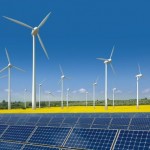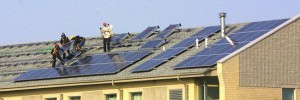
The research of Associate Professor Joshua Pearce (MSE/ECE) on solar water disinfection was featured in the August issue of Environmental Health Perspectives.
Purifying Drinking Water with Sun, Salt, and Limes
Sun, salt, and lime juice may sound like ingredients for a vacation margarita, but recent research suggests they can also be used to help purify drinking water easily and cheaply—the type of solutions needed by millions of people in developing countries.
According to research leader Joshua Pearce, an associate professor in the Department of Materials Science and Engineering at Michigan Technological University, if you can read the headlines of a newspaper placed under a bottle of water, you have reduced the turbidity to below the 30-NTU SODIS threshold. “This provides an easy-to-understand sign for people outside of a laboratory that water has been sufficiently cleared for the SODIS treatment to work,” he says.
Read more at Environmental Health Perspectives, by Adrian Burton.




